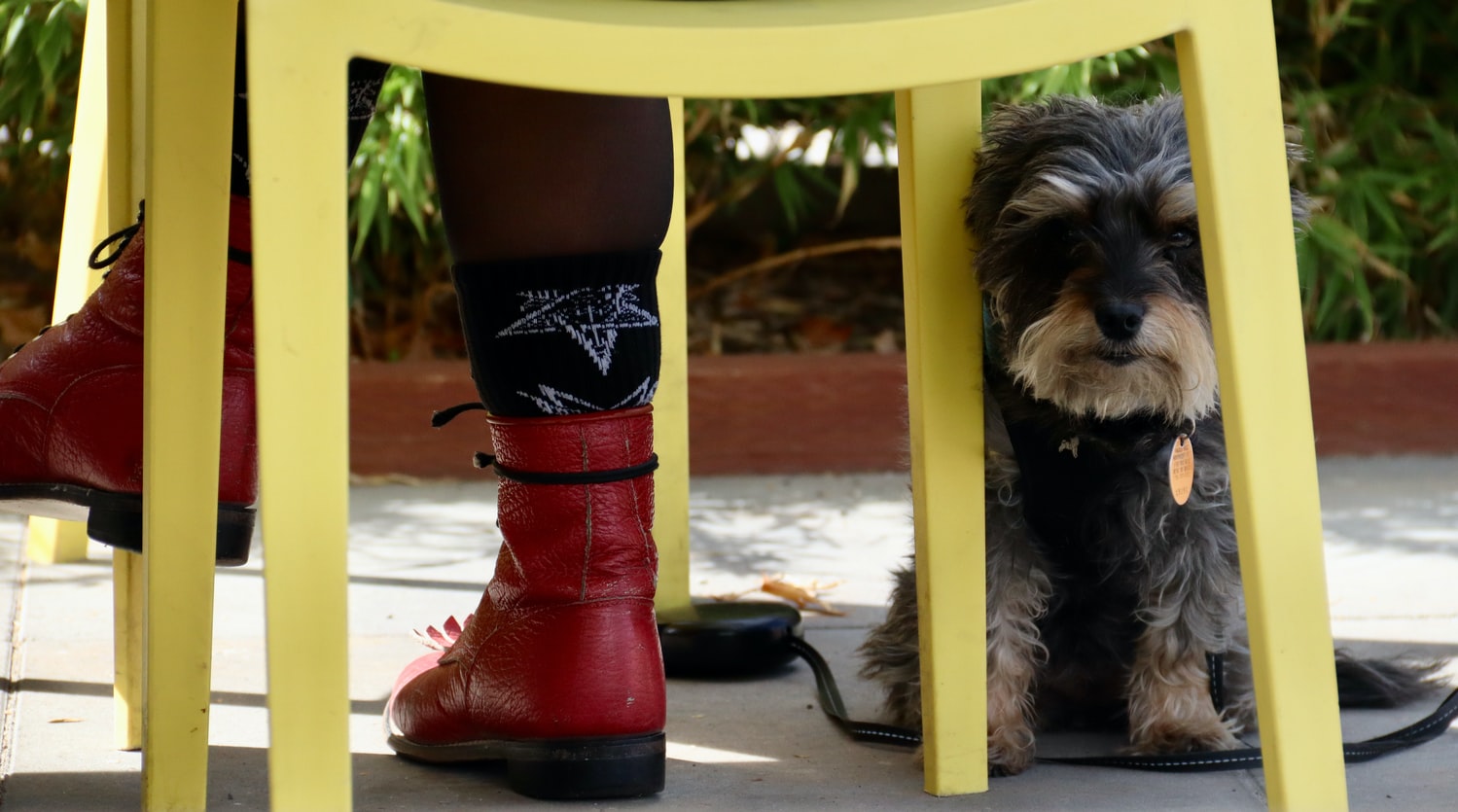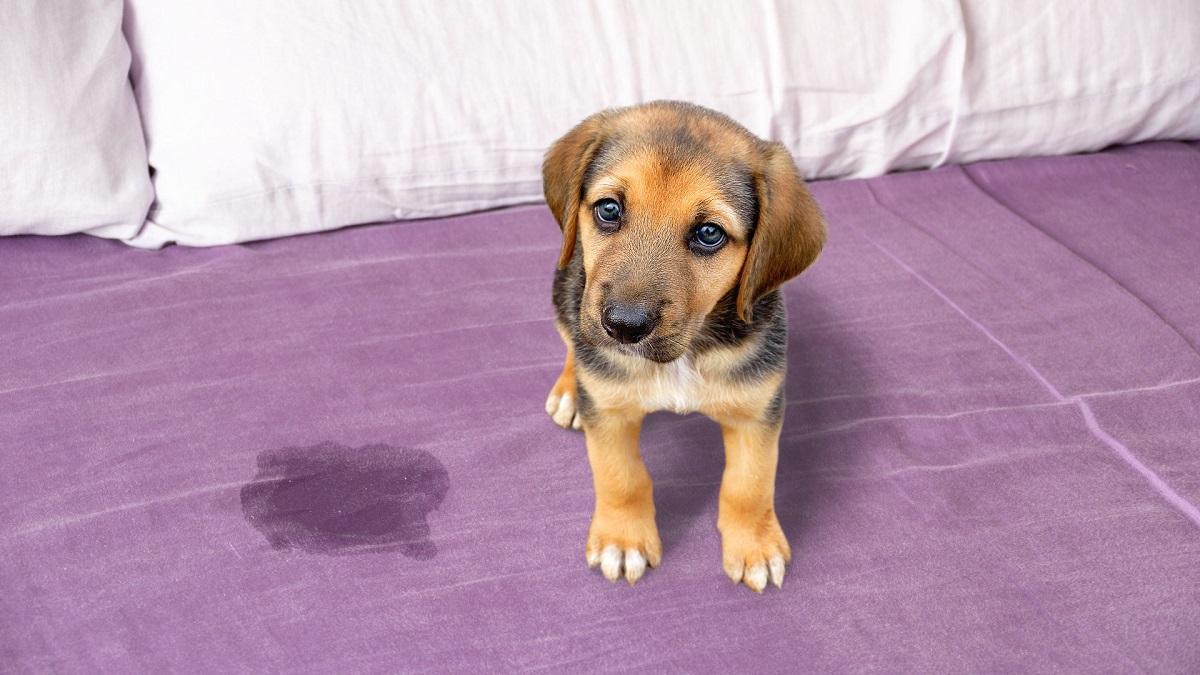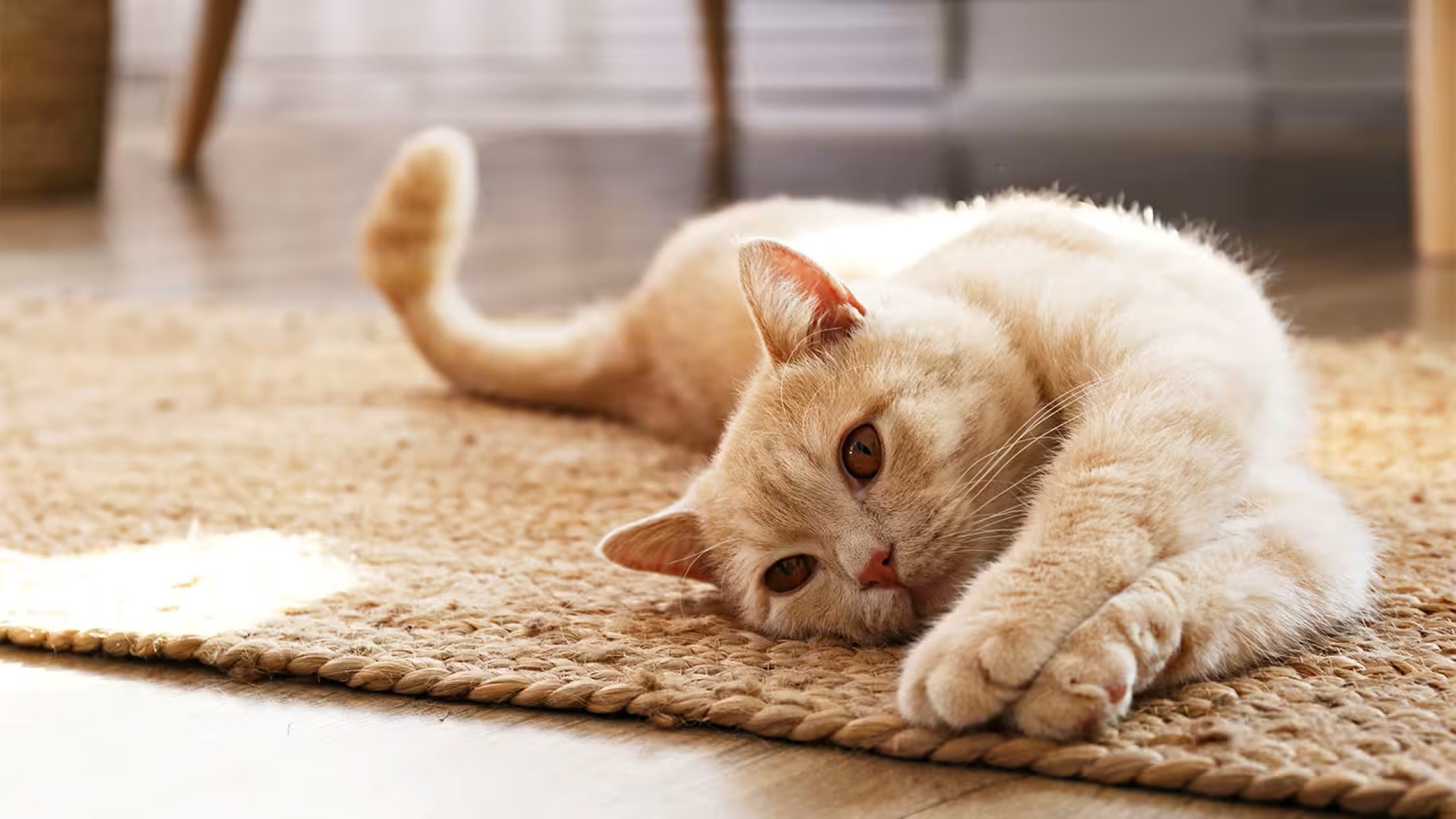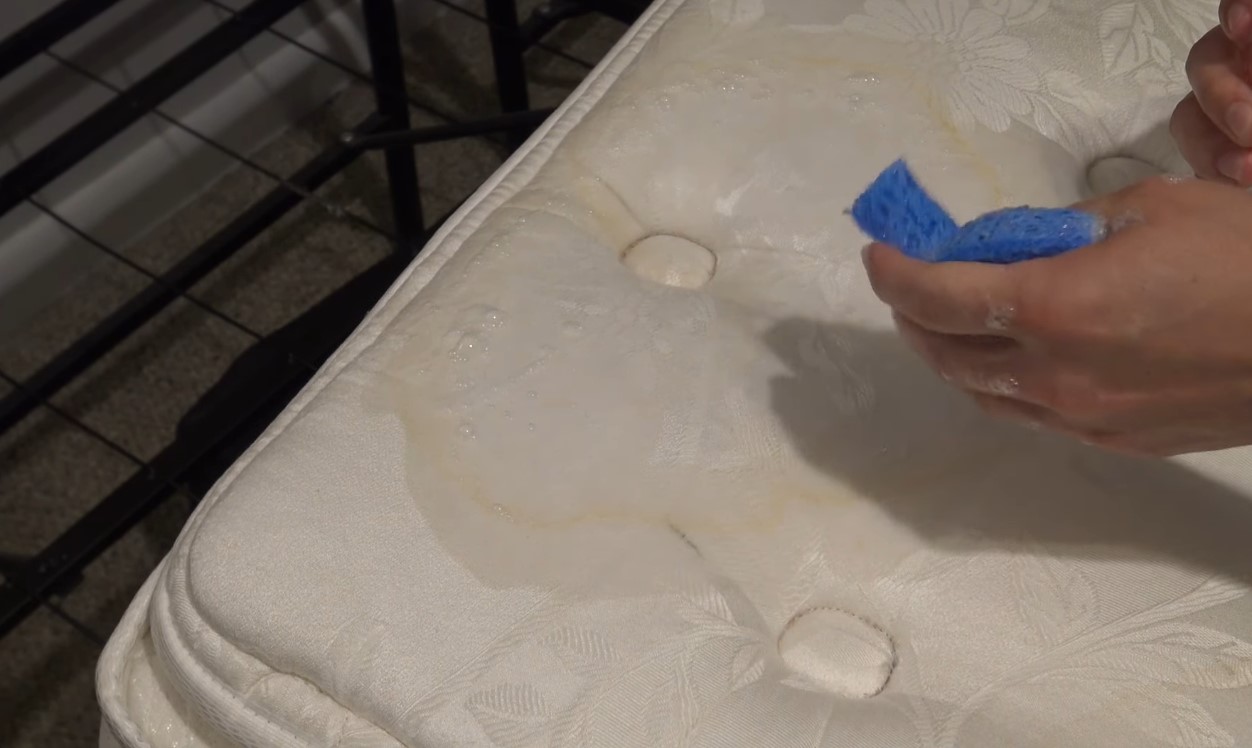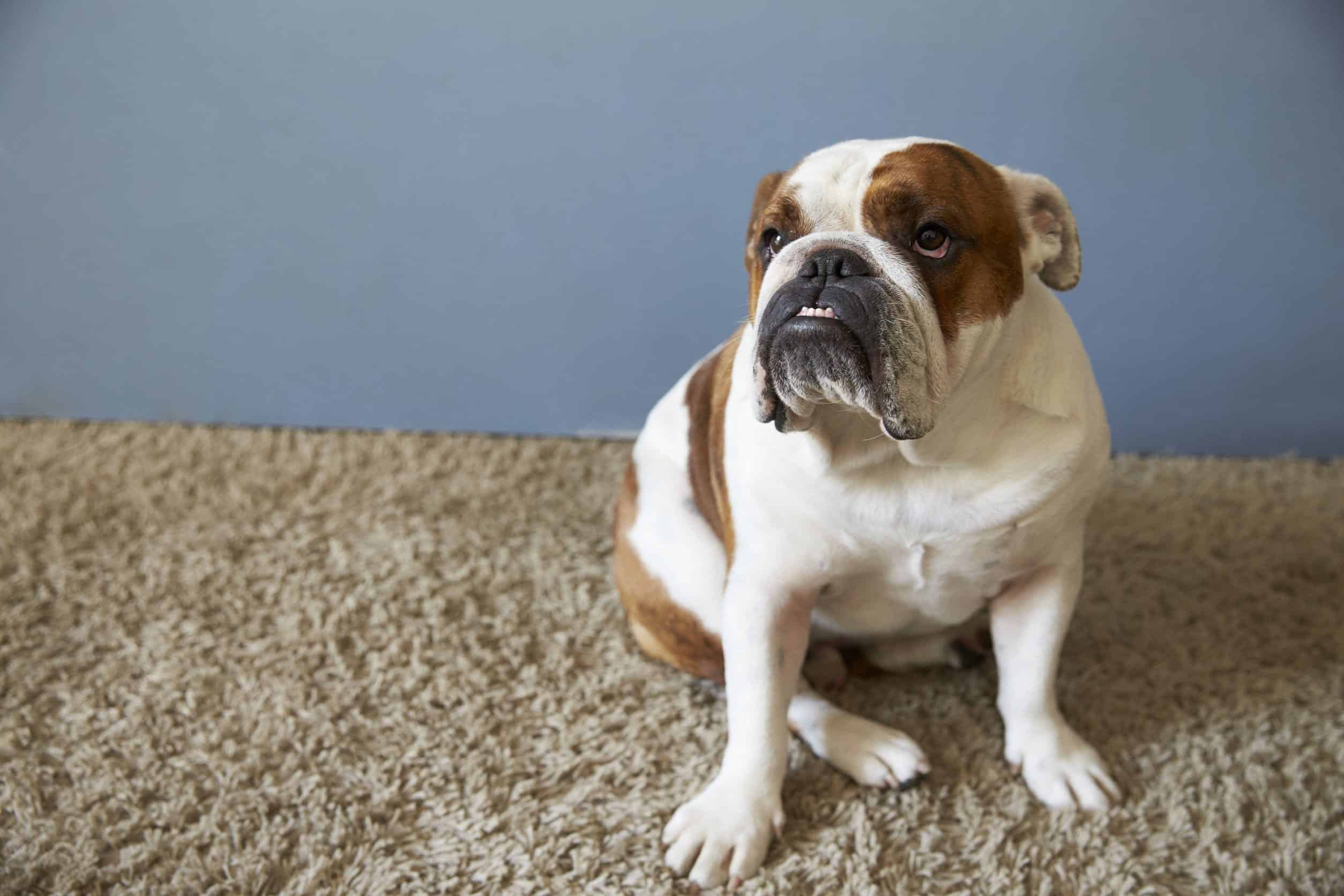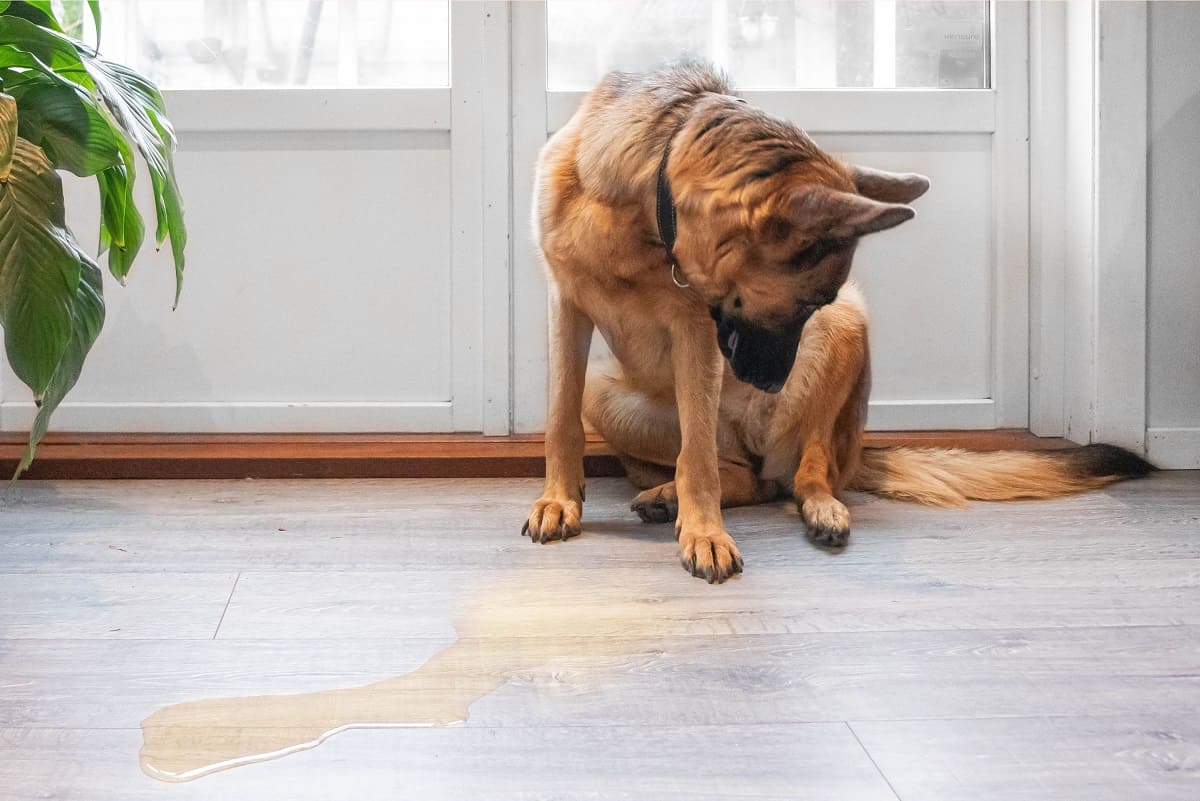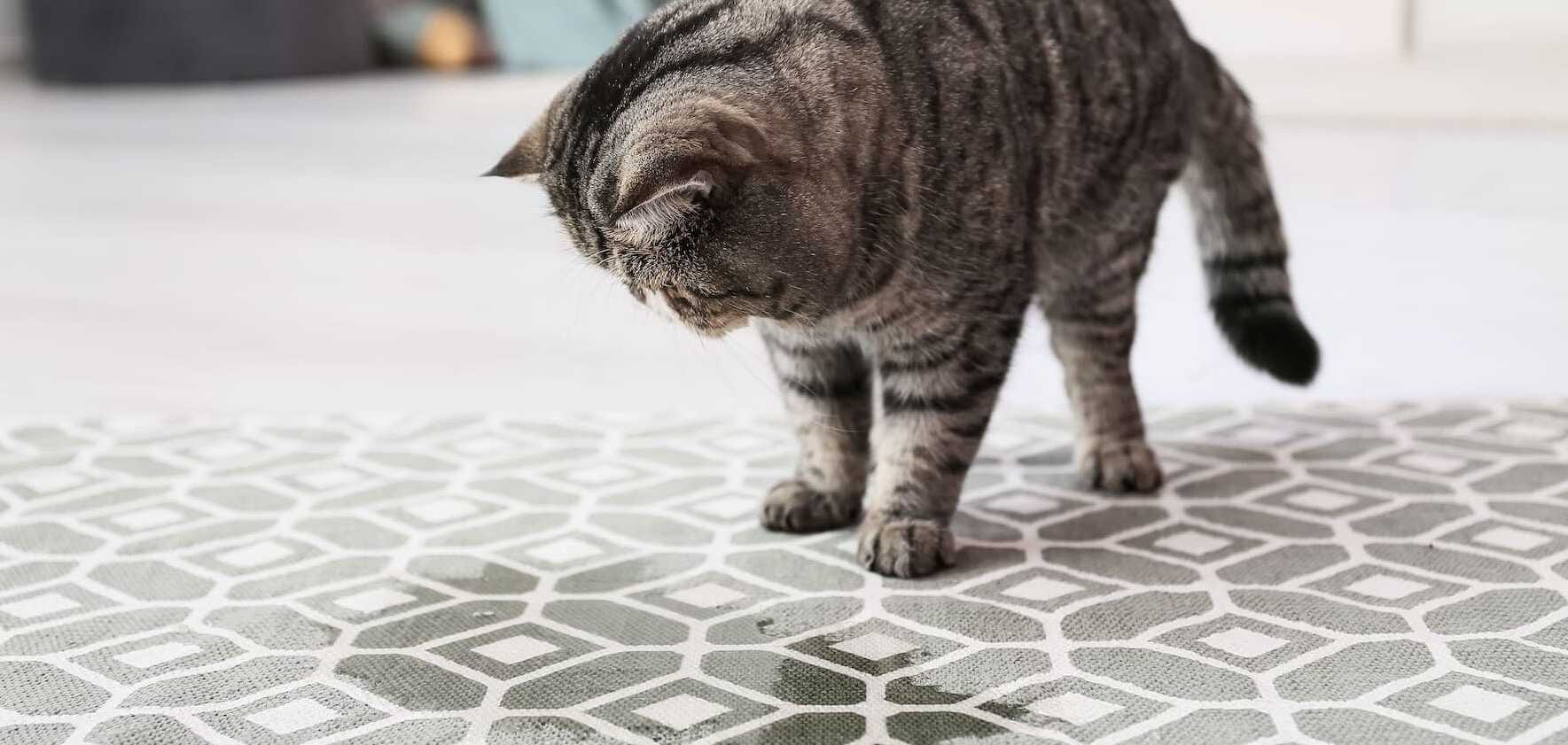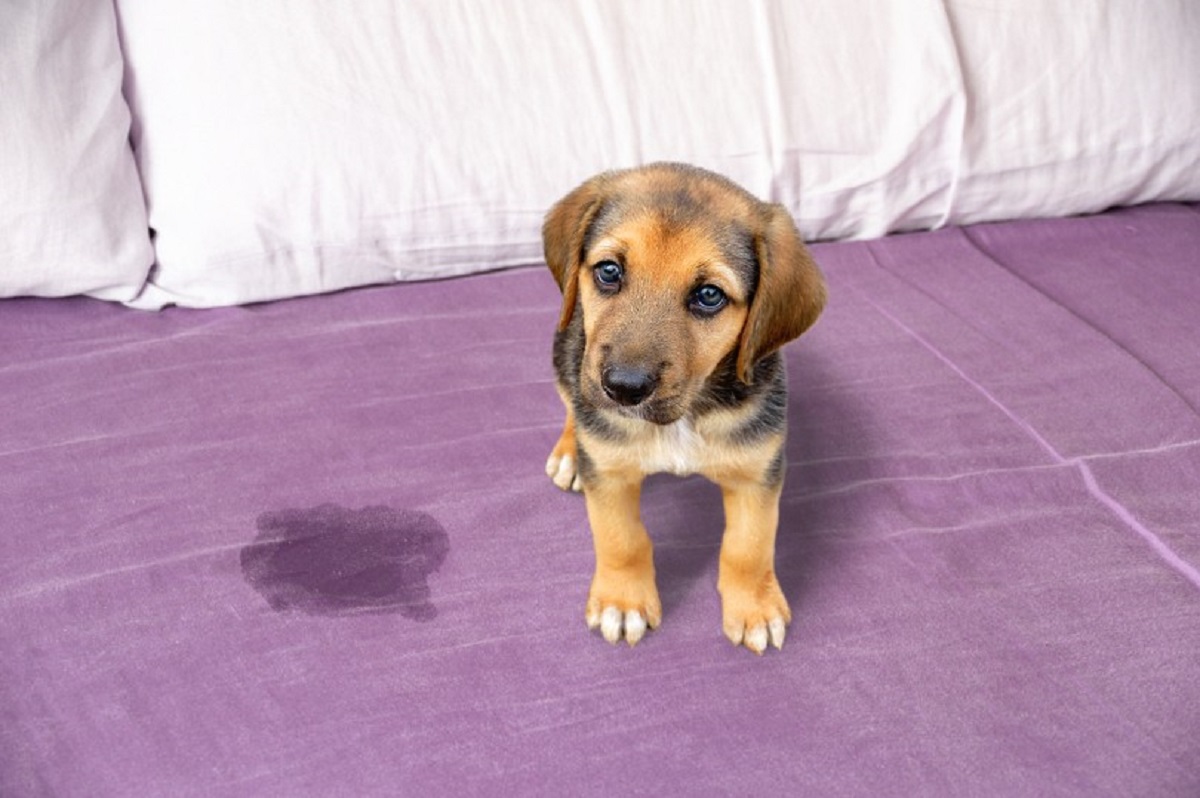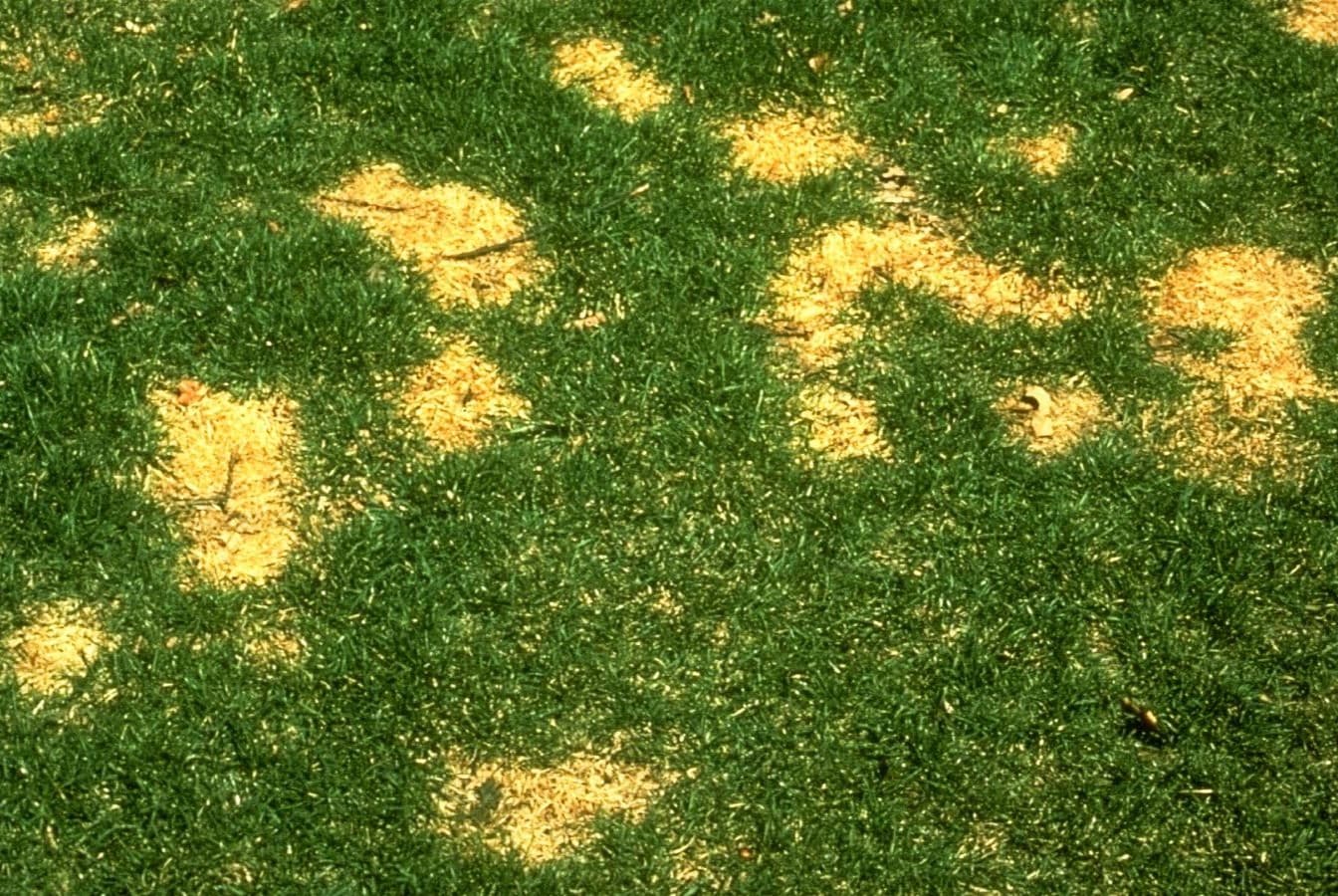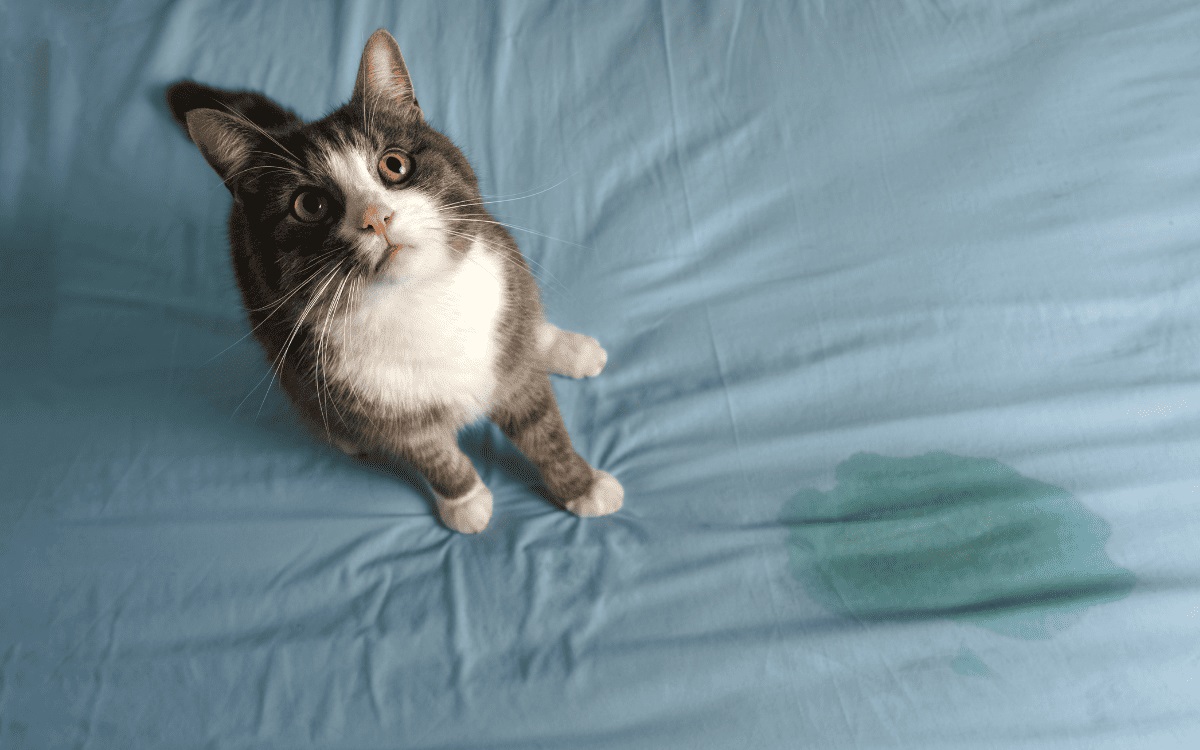Home>Furniture>Bedroom Furniture>How To Stop Peeing On The Bed


Bedroom Furniture
How To Stop Peeing On The Bed
Modified: September 1, 2024
Learn effective strategies to prevent bedwetting and stop peeing on the bed with our expert advice. Upgrade your bedroom furniture for a comfortable and dry night's sleep.
(Many of the links in this article redirect to a specific reviewed product. Your purchase of these products through affiliate links helps to generate commission for Storables.com, at no extra cost. Learn more)
Introduction
Bedwetting, also known as nocturnal enuresis, is a common issue that affects both children and adults. It can be an embarrassing and frustrating problem to deal with, but the good news is that there are effective solutions available. Whether you are a parent looking for ways to help your child stop wetting the bed or an adult seeking advice on how to overcome this issue, this article will provide you with comprehensive knowledge and practical tips to tackle bedwetting head-on.
Understanding the causes and factors contributing to bedwetting is the first step in finding the right solutions. Bedwetting can occur due to various reasons, such as delayed bladder development, low nighttime urine production, overactive bladder muscles, or hormonal imbalances. It can also be influenced by genetic factors and a family history of bedwetting. By understanding the underlying causes, you can better tailor your approach to addressing the issue.
It is worth noting that bedwetting can sometimes be a symptom of an underlying medical condition. In some cases, urinary tract infections, diabetes, sleep apnea, and certain neurological disorders can contribute to bedwetting. It is important to rule out any potential medical causes by consulting with a healthcare professional before implementing any solutions or interventions. Once medical conditions have been ruled out, you can focus on behavioral and lifestyle strategies to manage and overcome bedwetting.
This article will provide you with a comprehensive range of tips and techniques to help prevent bedwetting. From establishing bedtime routines and implementing bladder training techniques, to making dietary changes and managing fluid intake, these strategies can significantly reduce the frequency of bedwetting incidents. We will also discuss the use of bedwetting alarms and other devices that can assist in breaking the habit of bedwetting.
In addition to addressing bedwetting in children, this article will also explore solutions for adults who struggle with nocturnal enuresis. There are specific techniques, products, and therapeutic approaches that can help adults overcome bedwetting and regain control of their nighttime bladder function. By understanding the unique challenges faced by adults with bedwetting, we can provide tailored solutions to meet their needs.
While most cases of bedwetting can be managed effectively with lifestyle changes and behavioral interventions, there are instances where medical help may be required. We will discuss the situations in which it is advisable to seek medical evaluation and treatment options that may be available for more severe or persistent bedwetting cases.
Now that we have set the stage, let’s dive into the various causes, prevention techniques, and solutions for bedwetting. Whether you are a parent trying to help your child overcome bedwetting or an adult seeking answers, this article aims to provide you with the knowledge and guidance you need to address this issue and find a solution that works best for you.
Key Takeaways:
- Effective solutions for bedwetting include bedtime routines, bladder training, dietary changes, and alarms. Understanding the causes and seeking medical help when needed are crucial for managing this common issue in both children and adults.
- Creating a supportive environment, celebrating progress, and seeking professional guidance can help individuals overcome bedwetting. With patience, consistency, and the right strategies, restful and dry nights are achievable for both children and adults.
Read more: How To Stop Cat Peeing On Furniture
Understanding Bedwetting
Bedwetting, also known as nocturnal enuresis, is the involuntary release of urine during sleep. It is a common issue that affects many children and adults around the world. It is important to understand that bedwetting is not a deliberate act or a sign of laziness or disobedience. It is a medical condition that can have various underlying causes.
Bedwetting is particularly common in children, with around 15-20% of 5-year-olds experiencing occasional bedwetting. By the age of 10, around 5% of children still struggle with bedwetting. While most children outgrow bedwetting naturally over time, it can still be a source of embarrassment, frustration, and distress. Understanding the factors contributing to bedwetting can help parents and individuals find the best approach to manage and overcome this issue.
One factor that contributes to bedwetting is delayed bladder development. In some children, the nerves that control bladder function may take longer to mature, making it difficult for them to wake up in response to the sensation of a full bladder during sleep. This can result in involuntary bedwetting incidents.
Another factor is low nighttime urine production. Normally, the body produces less urine during nighttime sleep due to the release of an antidiuretic hormone called vasopressin. This hormone helps reduce urine production and increases the concentration of urine. However, in some individuals, the production of vasopressin may be insufficient, leading to higher urine output during sleep and increasing the likelihood of bedwetting.
Overactive bladder muscles can also contribute to bedwetting. In individuals with an overactive bladder, the muscles surrounding the bladder contract involuntarily, causing a sudden and strong urge to urinate. This can result in bedwetting if the individual is unable to wake up quickly enough to reach the bathroom in time.
Hormonal imbalances can also play a role in bedwetting. Hormones such as vasopressin and cortisol help regulate fluid balance in the body. Any disruption in the production or release of these hormones can affect bladder function and contribute to bedwetting.
It is important to note that bedwetting can have a genetic component. If one or both parents experienced bedwetting as children, their offspring are more likely to struggle with bedwetting as well. Family history can be a significant indicator of a predisposition to bedwetting.
Bedwetting can also be influenced by psychological and emotional factors such as stress, anxiety, and changes in routine or environment. Major life events, such as starting school, moving to a new home, or the arrival of a new sibling, can trigger or exacerbate bedwetting episodes. Addressing and managing these psychological factors can be an integral part of the treatment approach for bedwetting.
By understanding the various factors that contribute to bedwetting, individuals can tailor their approach to managing and overcoming this issue. It is important to remember that bedwetting is a common and treatable condition. With the right strategies and support, individuals can regain control of their bladder function and ensure restful, dry nights.
Causes of Bedwetting
Bedwetting, also known as nocturnal enuresis, can have various underlying causes. Understanding these causes is crucial in finding effective solutions to manage and prevent bedwetting incidents. While the exact cause may vary from person to person, there are several common factors that contribute to bedwetting.
Delayed bladder development is a common cause of bedwetting in children. The nerves that control bladder function may take longer to mature, resulting in difficulties in recognizing the sensation of a full bladder and waking up to use the bathroom. As a result, children may experience involuntary bedwetting incidents during sleep.
Low nighttime urine production can also contribute to bedwetting. Normally, the body produces less urine during nighttime sleep due to the release of an antidiuretic hormone called vasopressin. This hormone helps reduce urine production and increases the concentration of urine. However, in individuals with bedwetting, the production of vasopressin may be insufficient, leading to higher urine output during sleep and increasing the likelihood of bedwetting.
Overactive bladder muscles can play a role in bedwetting. In individuals with an overactive bladder, the muscles surrounding the bladder contract involuntarily, causing a sudden and strong urge to urinate. If the individual is unable to wake up quickly enough to reach the bathroom, bedwetting may occur.
Hormonal imbalances can also contribute to bedwetting. Hormones such as vasopressin and cortisol help regulate fluid balance in the body. Any disruption in the production or release of these hormones can affect bladder function and contribute to bedwetting. Hormonal imbalances can be caused by various factors, including genetics, medical conditions, or medications.
Psychological and emotional factors can have an impact on bedwetting as well. Stress, anxiety, and major life changes can trigger or exacerbate bedwetting incidents. The emotional response to these factors can affect the functioning of the bladder and contribute to bedwetting. Addressing and managing these psychological factors is an important aspect of treating bedwetting.
In some cases, bedwetting can be a symptom of an underlying medical condition. Urinary tract infections, diabetes, sleep apnea, and certain neurological disorders can contribute to bedwetting. If bedwetting persists despite efforts to manage it, it is important to consult with a healthcare professional to rule out any potential medical causes.
It is also worth mentioning that genetic factors can play a role in bedwetting. If one or both parents experienced bedwetting as children, their offspring are more likely to struggle with bedwetting as well. Family history can be a significant indicator of a predisposition to bedwetting.
By understanding the various causes of bedwetting, individuals and parents can take appropriate steps in managing and preventing bedwetting incidents. By addressing the underlying factors contributing to bedwetting, it is possible to find effective solutions and provide support to those dealing with this common condition.
Medical Conditions Associated with Bedwetting
While bedwetting, also known as nocturnal enuresis, is often a harmless condition that is outgrown over time, it can also be a symptom of an underlying medical issue. In some cases, bedwetting may be indicative of an underlying medical condition that should be addressed and treated appropriately. Here are several medical conditions that have been associated with bedwetting:
1. Urinary Tract Infections (UTIs): UTIs can cause inflammation and irritation of the urinary tract, leading to an increased frequency of urination and potentially resulting in bedwetting. If a UTI is suspected, a healthcare professional can conduct appropriate tests to confirm the diagnosis and prescribe appropriate treatment.
2. Diabetes: Bedwetting can be a symptom of both type 1 and type 2 diabetes, especially if accompanied by other symptoms such as increased thirst, frequent urination during the day, and unexplained weight loss. It is important to consult a healthcare professional for proper evaluation and diagnosis.
3. Sleep Apnea: Sleep apnea is a sleep disorder characterized by repeatedly paused or shallow breathing during sleep. It has been observed that individuals with sleep apnea may experience bedwetting episodes due to the disruption of their sleep patterns and the effect on bladder control. Treatment options for sleep apnea may include lifestyle changes, continuous positive airway pressure (CPAP) therapy, or surgical interventions.
4. Constipation: Chronic constipation can lead to an accumulation of stool in the rectum, which can put pressure on the bladder and result in bedwetting. Treating constipation through dietary changes, increased fluid intake, and appropriate medical interventions can help resolve bedwetting incidents associated with constipation.
5. Neurological Disorders: Certain neurological conditions, such as cerebral palsy, spina bifida, and epilepsy, have been associated with higher rates of bedwetting. These conditions can affect the communication between the brain and the bladder, leading to difficulties in controlling bladder function. Collaborating with healthcare professionals who specialize in these conditions can help develop appropriate management strategies.
It is essential to remember that not all instances of bedwetting are indicative of an underlying medical condition. In most cases, bedwetting is a developmental issue that is resolved as a child grows older and their bladder control improves. However, if bedwetting persists past the age at which it is commonly outgrown or is accompanied by other concerning symptoms, it is important to consult with a healthcare professional for further evaluation and appropriate treatment.
Identifying and treating any underlying medical conditions associated with bedwetting can help alleviate the symptoms and manage the condition more effectively. Healthcare professionals can conduct thorough evaluations, including medical histories, physical examinations, and additional tests, to make an accurate diagnosis and develop a comprehensive treatment plan tailored to the individual’s specific needs.
Tips for Preventing Bedwetting
While bedwetting can be a frustrating issue to deal with, there are several tips and strategies that can help prevent bedwetting incidents. Implementing these techniques can significantly reduce the frequency of bedwetting and provide both children and adults with better control over their bladder function. Here are some helpful tips for preventing bedwetting:
1. Establish a Consistent Bedtime Routine: Creating a structured routine before bedtime can help train the body to recognize the signals for urination. Encourage regular bathroom breaks before sleep to empty the bladder, even if there is no strong urge to urinate.
2. Limit Fluid Intake Before Bed: Restricting fluids, especially caffeinated or sugary drinks, in the hours leading up to bedtime can minimize the likelihood of bedwetting. Encourage adequate fluid intake throughout the day, but encourage reducing intake in the evening hours to avoid excessive bladder filling during sleep.
3. Use Bedwetting Alarms: Bedwetting alarms are devices that emit an audible alert when urine is detected, helping to wake the individual at the first sign of bedwetting. Over time, this conditioning can help train the brain and bladder to recognize the need to wake up and use the bathroom.
4. Encourage Regular Toilet Use: Remind children and adults to use the bathroom regularly throughout the day, at least every two to three hours. This helps prevent the bladder from becoming overly full and reduces the likelihood of bedwetting during sleep.
5. Bladder Retraining Techniques: Instruct individuals to practice “holding” their urine for extended periods during the day, gradually increasing the duration to strengthen bladder control. This technique, known as bladder retraining, can help improve bladder capacity and reduce bedwetting incidents at night.
6. Reward Progress and Positive Reinforcement: Encourage and praise individuals for their efforts and progress in managing bedwetting. Providing incentives and rewards for dry nights or successful efforts can help motivate and reinforce positive behavior.
7. Use waterproof bedding and protectors: Investing in waterproof mattress pads, sheets, or protective covers can make clean-up easier and protect the mattress from damage due to bedwetting incidents. This gives individuals peace of mind and relieves the stress associated with cleaning up after accidents.
8. Distract with White Noise: Some individuals may find it helpful to use white noise machines or apps to create a soothing background noise that can help mask the sound of bedwetting, reducing the embarrassment or anxiety associated with it.
9. Reduce Stress and Anxiety: Stress and anxiety can contribute to bedwetting episodes. Implementing relaxation techniques, such as deep breathing exercises, mindfulness, or engaging in calming activities before bed, can help reduce stress levels and promote better sleep.
10. Seek Emotional Support: Bedwetting can have a significant impact on an individual’s emotional well-being. Encourage open communication and provide a supportive environment to address any concerns or anxieties related to bedwetting. Counseling or support groups can also be valuable resources for individuals and families dealing with the emotional aspect of bedwetting.
Remember, every individual is unique, and what works for one person may not work for another. It may take time and patience to find the most effective strategies for preventing bedwetting. However, with perseverance and a supportive approach, individuals can successfully manage and even overcome bedwetting, leading to dry and restful nights.
Bedtime Routines and Bladder Training Techniques
Establishing a consistent bedtime routine and implementing bladder training techniques can be effective strategies in managing and preventing bedwetting incidents. By incorporating these practices into daily life, individuals can improve bladder control and reduce the frequency of bedwetting. Here are some helpful tips for developing a bedtime routine and bladder training:
1. Set a Regular Bedtime: Establishing a consistent bedtime is essential in regulating the body’s natural sleep-wake cycle. Aim for a consistent bedtime each night, allowing the body to get accustomed to a regular sleep routine. This helps train the body to anticipate and respond to the need for urination during sleep.
2. Create a Calming Environment: Before bedtime, create a peaceful atmosphere that promotes relaxation. Dim the lights, lower the noise level, and engage in calming activities like reading a book or taking a warm bath. This environment can help signal to the body that it is time to wind down and prepare for sleep.
3. Encourage Bathroom Breaks: Encourage individuals, especially children, to use the bathroom immediately before getting into bed. This helps empty the bladder and reduces the chance of bedwetting during the night. It is important to ensure that individuals take their time to fully empty their bladder before going to bed.
4. Gradually Increase Time Between Bathroom Breaks: Start by having individuals use the bathroom every two hours during the day. Gradually increase the time intervals between bathroom breaks, allowing the bladder to stretch and gradually increase its capacity. This bladder training technique helps improve bladder control and reduce the frequency of bedwetting.
5. Use a Bedwetting Alarm: Bedwetting alarms are effective tools in bladder training. These devices are designed to detect moisture and emit an alarm to wake the individual at the first sign of bedwetting. Over time, the alarm conditions the brain and bladder to wake up in response to the sensation of a full bladder, promoting better bladder control during sleep.
6. Keep a Bedwetting Diary: Maintaining a bedwetting diary can help track patterns and identify potential triggers or factors contributing to bedwetting episodes. Note the times of bedwetting incidents, fluid intake, and any changes in routine or emotional factors. This information can be valuable in identifying patterns and tailoring strategies to prevent bedwetting.
7. Positive Reinforcement: Offer praise and rewards for dry nights or successful efforts in following the bedtime routine and bladder training techniques. Positive reinforcement encourages motivation and builds confidence in individuals who are working towards overcoming bedwetting.
8. Stay Consistent: Consistency is key when implementing bedtime routines and bladder training techniques. Ensure that the routine is followed every night, even during vacations or weekends. Consistency helps reinforce positive habits and facilitates progress in managing bedwetting.
Remember, it is important to be patient and persistent when implementing bedtime routines and bladder training techniques. Results may not be immediate, but with time and consistent effort, individuals can develop better bladder control and reduce the frequency of bedwetting incidents. If bedwetting persists despite these strategies, it is advisable to seek guidance from a healthcare professional who can provide additional support and guidance.
Make sure to empty your bladder before going to bed. Limit fluids a few hours before bedtime and avoid alcohol and caffeine, which can increase urine production. Consider using a waterproof mattress cover for added protection.
Dietary Changes and Fluid Management
Implementing dietary changes and managing fluid intake can have a significant impact on bedwetting. Making thoughtful choices in regards to food and drink can help reduce the frequency of bedwetting incidents. Here are some helpful tips for making dietary changes and managing fluid intake:
1. Limit Fluid Intake Before Bed: It is important to reduce fluid intake in the hours leading up to bedtime. Encourage individuals, especially children, to drink enough fluids throughout the day to stay hydrated, but limit drinks in the evening to prevent excessive bladder filling during sleep. Avoid caffeine and sugary beverages, as they can act as diuretics and increase urine production.
2. Encourage Water Intake Throughout the Day: While it is important to limit fluids before bed, ensure individuals, especially children, are adequately hydrated during the day. Drinking enough water can help maintain a healthy bladder function and minimize the chances of bedwetting incidents.
3. Monitor Fluid Consumption: Keeping track of fluid intake can provide insight into how much is being consumed and at what times. This information can help identify patterns and make informed adjustments to fluid intake. It can also be useful in determining if certain fluids, such as caffeinated beverages or excessive sugary drinks, are contributing to bedwetting.
4. Increase Fiber Intake: A diet rich in fiber can help prevent constipation, which can contribute to bedwetting. Encourage the consumption of fiber-rich foods such as fruits, vegetables, whole grains, and legumes. Adequate fiber intake promotes regular bowel movements and relieves pressure on the bladder.
5. Avoid Trigger Foods and Drinks: Certain foods and drinks can irritate the bladder and increase urine production, potentially leading to bedwetting. Spicy foods, citrus fruits, tomatoes, and carbonated beverages can be bladder irritants for some individuals. Pay attention to any personal triggers and reduce their consumption.
6. Consider Probiotics: Probiotics are beneficial bacteria that can promote a healthy digestive system and reduce constipation. Research suggests that certain strains of probiotics may help improve bladder function as well. Consult with a healthcare professional about incorporating probiotics into the diet to potentially support bladder health.
7. Encourage Regular Bowel Movements: Constipation can contribute to bedwetting by putting pressure on the bladder. Encourage regular bowel movements by promoting a high-fiber diet, maintaining good hydration, and establishing a consistent bathroom routine. If constipation persists, consult with a healthcare professional for appropriate management strategies.
8. Work with a Nutritionist: For individuals with complex dietary needs or specific concerns, consulting a nutritionist can be beneficial. A nutritionist can provide personalized guidance and recommendations tailored to the individual’s dietary preferences, health conditions, and goals, helping to maximize bladder health and prevent bedwetting incidents.
It is important to note that dietary changes and fluid management alone may not completely resolve bedwetting, especially if there are underlying medical or physiological factors involved. It is still advisable to seek professional guidance from a healthcare provider if bedwetting persists or is accompanied by other concerning symptoms.
By making informed dietary choices and managing fluid intake, individuals can contribute to improved bladder health and reduce the frequency of bedwetting incidents, leading to more restful and dry nights.
Bedwetting Alarms and Other Devices
Bedwetting alarms and other devices can be valuable tools in managing and treating bedwetting, also known as nocturnal enuresis. These devices are designed to help individuals, especially children, develop better bladder control and wake up in response to the sensation of a full bladder. Here are some commonly used bedwetting alarms and other devices:
1. Bedwetting Alarms: Bedwetting alarms are a popular and effective intervention for managing bedwetting. These devices consist of a moisture sensor that is placed in or attached to the underwear or bedding. When moisture is detected, the alarm emits a sound or vibration to wake the individual, alerting them to use the bathroom. Over time, this conditioning helps individuals develop better bladder control and wake up in response to the need to urinate.
2. Vibration Alarms: Vibration alarms work similarly to sound alarms but rely on vibrating sensations instead. These devices can be particularly useful for individuals who are sensitive to loud noises or for those who share a bedroom and do not want to disturb others with the sound of an alarm.
3. Wireless Bedwetting Alarms: Wireless bedwetting alarms offer the convenience of freedom of movement during sleep. Instead of a physical wire connecting the sensor to the alarm, they use wireless technology to transmit signals. These devices provide flexibility and comfort for the individual, allowing them to move around without restricting their movement during sleep.
4. Enuresis Sensor Pads: Enuresis sensor pads are thin, flexible pads that are placed on the bed or under the sheets. These pads have built-in sensors that can detect moisture, triggering an alarm when wetting occurs. Sensor pads are less intrusive compared to wearable alarms and allow for a more comfortable sleep experience.
5. Moisture-Sensing Bed Alarms: Moisture-sensing bed alarms are designed for individuals who move around a lot during sleep or for those who prefer not to wear a wearable alarm. These alarms are placed directly on the bed and use sensors to detect moisture. Once wetting is detected, the alarm is triggered to wake the individual.
6. Smart Bedwetting Alarms: With advancements in technology, there are now smart bedwetting alarms available. These devices connect to a smartphone or tablet and use mobile applications to track bedwetting incidents, monitor progress, and provide personalized insights and recommendations. Smart alarms can also send notifications or reminders to the caregiver or individual to prompt toileting or encourage progress.
7. Waterproof Bedding and Mattress Protectors: Waterproof bedding and mattress protectors are essential tools in managing bedwetting incidents. These protective covers create a barrier between the sheets and the mattress, preventing moisture from reaching the mattress and keeping it clean and dry. Waterproof bedding and mattress protectors are easy to clean, providing convenience and peace of mind.
When selecting and using bedwetting alarms and devices, it is important to involve the individual, especially children, in the decision-making process. Consider their preferences, comfort, and level of cooperation to ensure the device is well-suited for their needs.
It is important to remember that bedwetting alarms and devices serve as aids in developing better bladder control and quality sleep. It is a gradual process, and consistency is key. The support and guidance of a healthcare professional can be helpful in determining the most suitable device and incorporating it into an effective treatment plan.
Bedwetting alarms and other devices can significantly contribute to the management and improvement of bedwetting episodes, helping individuals regain control over their bladder function, and achieve dry nights.
Bedwetting Solutions for Children
Bedwetting, also known as nocturnal enuresis, is a common issue that many children face. While most children outgrow bedwetting naturally, there are several effective solutions that can help manage and reduce bedwetting incidents. Here are some bedwetting solutions specifically for children:
1. Bedwetting Alarms: Bedwetting alarms are highly effective in treating bedwetting in children. These devices use moisture sensors to detect wetting and emit a sound or vibration to wake the child up. Over time, the alarm conditions the child to recognize and respond to the sensation of a full bladder, ultimately helping them develop better bladder control. Bedwetting alarms promote independence and empower children to take an active role in managing their bedwetting.
2. Bladder Retraining: Bladder retraining techniques involve gradually increasing the time between bathroom breaks during the day. This helps train the child’s bladder to hold more urine for longer periods. Start by having the child use the bathroom consistently every two hours during the day, gradually increasing the interval to promote bladder capacity and control. Bladder retraining can be combined with the use of a bedwetting alarm for better results.
3. Encourage Regular Bathroom Breaks: Remind children to use the bathroom regularly throughout the day, even if they don’t feel an urgent need to urinate. This helps ensure that their bladder doesn’t become overly full and reduces the chances of bedwetting incidents during sleep. Establishing a routine of consistent bathroom breaks can contribute to better bladder control.
4. Create a Positive Environment: Bedwetting can be emotionally challenging for children, leading to feelings of embarrassment or shame. Create a supportive and understanding environment where the child feels comfortable discussing their bedwetting. Offer reassurance, praise their efforts, and emphasize that bedwetting is a common issue that many children experience and eventually outgrow.
5. Implement a Bedtime Routine: Establishing a consistent bedtime routine can help signal to the child’s body that it’s time to wind down and prepare for sleep. Include a trip to the bathroom as part of the routine, ensuring that the child empties their bladder before going to bed. Consistency in the bedtime routine can contribute to better bladder control and reduce bedwetting incidents.
6. Use Waterproof Bedding and Mattress Protectors: Investing in waterproof bedding and mattress protectors is essential in managing bedwetting incidents. These protective covers create a barrier between the sheets and the mattress, preventing moisture from reaching the mattress and keeping it clean and dry. Waterproof bedding provides comfort and reassurance for both the child and the parent.
7. Fluid Management: Encourage children to drink enough fluids throughout the day to stay hydrated but limit fluid intake in the evening hours. Restricting fluids before bed can help prevent excessive bladder filling during sleep and reduce the likelihood of bedwetting. Monitoring and managing fluid intake can have a positive impact on managing bedwetting in children.
Remember, it is important to be patient, understanding, and supportive when implementing bedwetting solutions for children. Every child is different, and what works for one may not work for another. If bedwetting persists despite these solutions or is accompanied by other concerning symptoms, it is advisable to consult a healthcare professional for further evaluation and guidance.
With the right support, strategies, and a positive attitude, children can develop better bladder control and successfully overcome bedwetting, leading to happier and more confident nights.
Read more: How To Stop Dogs From Peeing On A Patio
Bedwetting Solutions for Adults
Bedwetting, also known as nocturnal enuresis, is not limited to children and can affect adults as well. It can be a distressing and embarrassing condition, but there are effective solutions available. Here are some bedwetting solutions specifically for adults:
1. Consult with a Healthcare Professional: If you are an adult experiencing bedwetting, it is important to consult with a healthcare professional to rule out any potential underlying medical conditions. They can evaluate your health history, conduct appropriate tests, and provide guidance on the best course of action for managing your bedwetting.
2. Bedwetting Alarms: Bedwetting alarms, which use moisture sensors, can be effective in treating bedwetting in adults. These alarms alert you with a sound or vibration as soon as wetness is detected, waking you up to use the bathroom. Over time, bedwetting alarms can help retrain your bladder and improve your ability to wake up in response to a full bladder.
3. Bladder Training: Bladder training involves gradually increasing the intervals between bathroom breaks during the day. This helps improve bladder capacity and control. Start by spacing out your bathroom visits by small increments and gradually increasing the time between breaks. Bladder training can help you develop better bladder control and reduce the frequency of bedwetting incidents.
4. Fluid Management: Evaluate your fluid intake throughout the day and pay attention to your evening habits. Limiting excessive fluid intake in the evening can help reduce the volume of urine produced during sleep and minimize the likelihood of bedwetting. However, it is important to ensure that you are adequately hydrated throughout the day.
5. Dietary Changes: Certain foods and drinks can irritate the bladder and contribute to bedwetting. Pay attention to your diet and try to avoid bladder irritants such as caffeine, alcohol, and spicy or acidic foods. Making dietary adjustments can help reduce the chances of bedwetting incidents.
6. Medication or Hormone Therapy: In some cases, medications or hormone therapy may be prescribed to treat adult bedwetting. These interventions are typically considered for individuals with specific underlying medical conditions that contribute to bedwetting. Consult with a healthcare professional to determine if medication or hormone therapy is suitable for you.
7. Behavioral and Lifestyle Modifications: Implementing certain behavioral and lifestyle modifications can help manage adult bedwetting. This includes establishing a regular sleep routine, practicing good sleep hygiene, managing stress levels, and maintaining a healthy lifestyle overall. Healthy habits promote improved sleep quality and may contribute to better bladder control.
8. Support and Counseling: Adult bedwetting can have an emotional impact, leading to feelings of embarrassment, shame, or anxiety. Seeking support from a counselor or participating in support groups can provide a safe space to share experiences, receive guidance, and gain emotional support from others who are dealing with similar challenges.
Remember, every individual is unique, and what works for one may not work for another. It may require trial and error to find the most effective bedwetting solution for you as an adult. Patience, persistence, and open communication with healthcare professionals can help identify the best approach to manage adult bedwetting and improve your quality of life.
With the right strategies, support, and self-care, adults can overcome bedwetting and regain their confidence and comfort during sleep.
When to Seek Medical Help for Bedwetting
Bedwetting, also known as nocturnal enuresis, is a common issue that can often be managed with lifestyle changes and behavioral interventions. However, there are instances when it is advisable to seek medical help to identify and address any underlying issues. Here are some situations when it is important to consult a healthcare professional:
1. Persistent Bedwetting: If bedwetting continues beyond the age when it is commonly outgrown (typically by age 7 in children), it is recommended to seek medical evaluation. Persistent bedwetting may indicate an underlying medical condition or physiological issue that requires further examination and treatment.
2. Sudden Onset of Bedwetting: If bedwetting suddenly starts in an individual who has previously been dry, it may be a sign of an underlying health problem. It is important to consult with a healthcare professional to identify any potential causes and determine the appropriate course of action.
3. Physical Symptoms or Pain: If bedwetting is accompanied by physical symptoms such as frequent urination, pain during urination, or blood in the urine, it may be an indication of a urinary tract infection or another urological issue. These symptoms should not be ignored, and medical attention should be sought promptly.
4. Emotional or Behavioral Changes: If bedwetting is causing significant emotional distress, embarrassment, or affecting a person’s daily life, it is important to seek support and guidance from a healthcare professional. They can offer strategies to manage the emotional impact of bedwetting and provide appropriate treatment options.
5. Daytime Symptoms: If bedwetting is accompanied by daytime symptoms such as urgency, frequency, or difficulty controlling urination, it may suggest an underlying bladder or urinary issue. Consulting with a healthcare professional can help evaluate the comprehensive urinary function and determine the appropriate treatment approach.
6. Other Concerning Symptoms: If bedwetting is accompanied by other concerning symptoms, such as weight loss, excessive thirst, fatigue, snoring, or daytime sleepiness, it may be a sign of an underlying medical condition like diabetes or sleep apnea. Prompt medical evaluation is important to identify and address these potential health issues.
7. Frustration and Disruption in Daily Life: If bedwetting is causing significant frustration, disruption of sleep, or interference with the person’s social, school, or work life, it is important to seek medical help. Healthcare professionals can provide guidance and support to manage and overcome these challenges.
Remember, every individual is unique, and the decision to seek medical help for bedwetting depends on the individual’s situation and the presence of any concerning symptoms. Seeking medical advice can help identify any underlying causes or conditions, and healthcare professionals can provide appropriate treatment options and support to manage bedwetting effectively.
It is always better to err on the side of caution and consult with a healthcare professional if bedwetting causes concern or if there are persistent, troubling symptoms. They can help evaluate the situation, provide expert advice, and develop a tailored plan to address the bedwetting and promote optimal bladder health.
Conclusion
Bedwetting, or nocturnal enuresis, is a common issue that affects both children and adults. While it can be frustrating and embarrassing, it is essential to remember that bedwetting is not a deliberate act or a sign of laziness. Rather, it is often a result of underlying factors such as delayed bladder development, low nighttime urine production, overactive bladder muscles, hormonal imbalances, genetic predisposition, or even psychological and emotional factors. Recognizing and understanding these causes is the first step toward finding effective solutions.
Fortunately, there are numerous strategies and interventions available to manage and reduce bedwetting incidents. Bedtime routines, bladder training techniques, dietary changes, fluid management, and the use of bedwetting alarms and other devices can all contribute to improving bladder control and reducing bedwetting episodes. These solutions can be tailored to meet the specific needs of both children and adults.
It is important to approach bedwetting with patience, understanding, and support. Creating a positive and non-judgmental environment is crucial, especially for children, as it helps alleviate feelings of shame and embarrassment. Celebrating progress and providing encouragement along the journey can boost confidence and motivate individuals to continue their efforts in managing bedwetting.
While most cases of bedwetting can be managed successfully, there may be instances where medical help is necessary. If bedwetting persists beyond a certain age, is accompanied by physical symptoms or pain, occurs suddenly, or is causing significant disruption or emotional distress, it is advisable to seek guidance from a healthcare professional. They can evaluate for underlying medical conditions and recommend appropriate treatment options.
Remember, the journey towards overcoming bedwetting may involve some trial and error to find the most effective strategies. It is important to stay patient, remain consistent, and celebrate any progress made. With the right approach, support, and a positive mindset, bedwetting can be managed, and individuals can regain control over their bladder function, leading to more restful and dry nights.
Seeking help, whether from healthcare professionals, support groups, or counseling, can provide valuable guidance and support throughout this journey. Together, we can work towards a day when bedwetting is no longer a cause for distress, and individuals can enjoy a good night’s sleep with confidence and comfort.
Frequently Asked Questions about How To Stop Peeing On The Bed
Was this page helpful?
At Storables.com, we guarantee accurate and reliable information. Our content, validated by Expert Board Contributors, is crafted following stringent Editorial Policies. We're committed to providing you with well-researched, expert-backed insights for all your informational needs.
